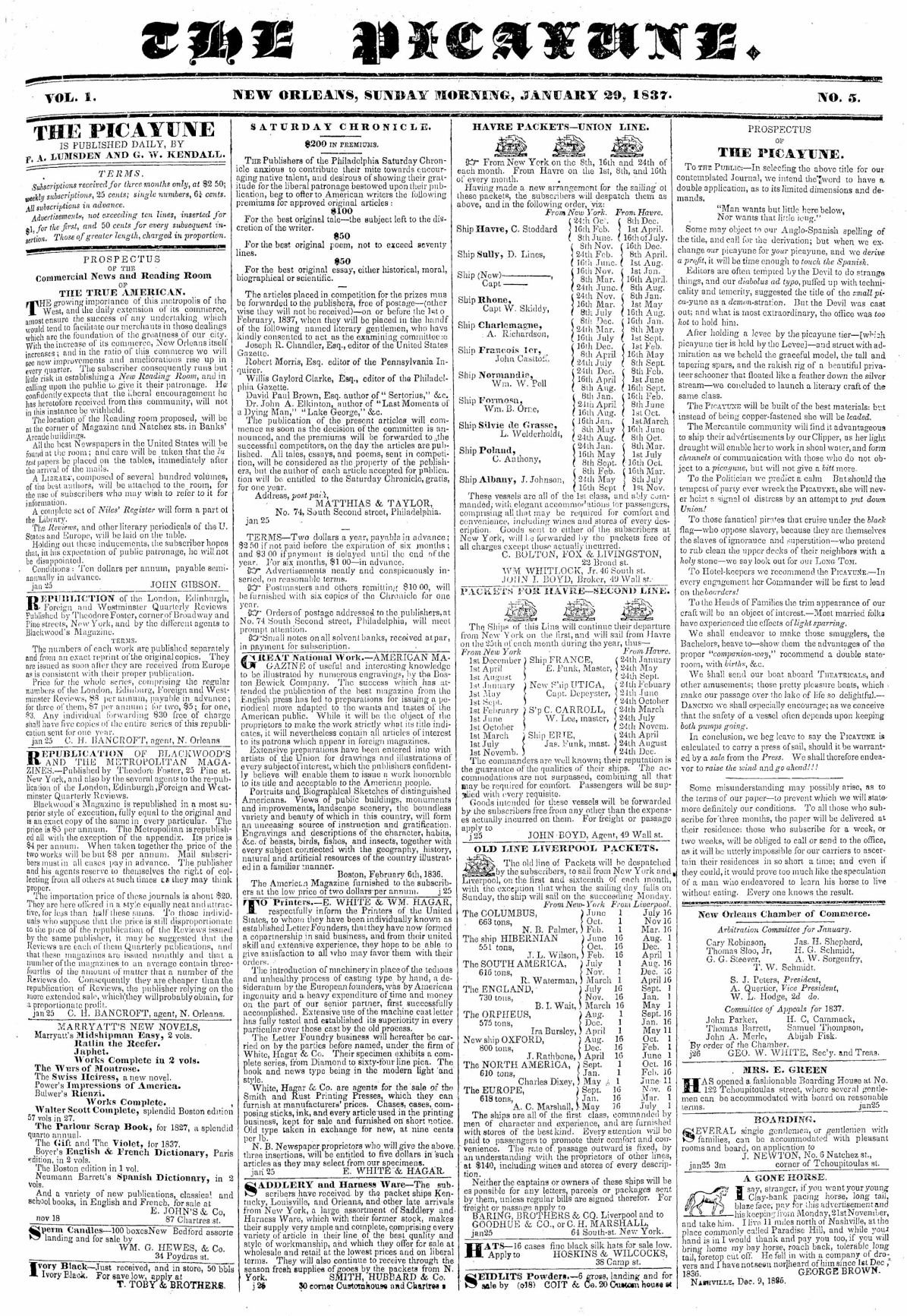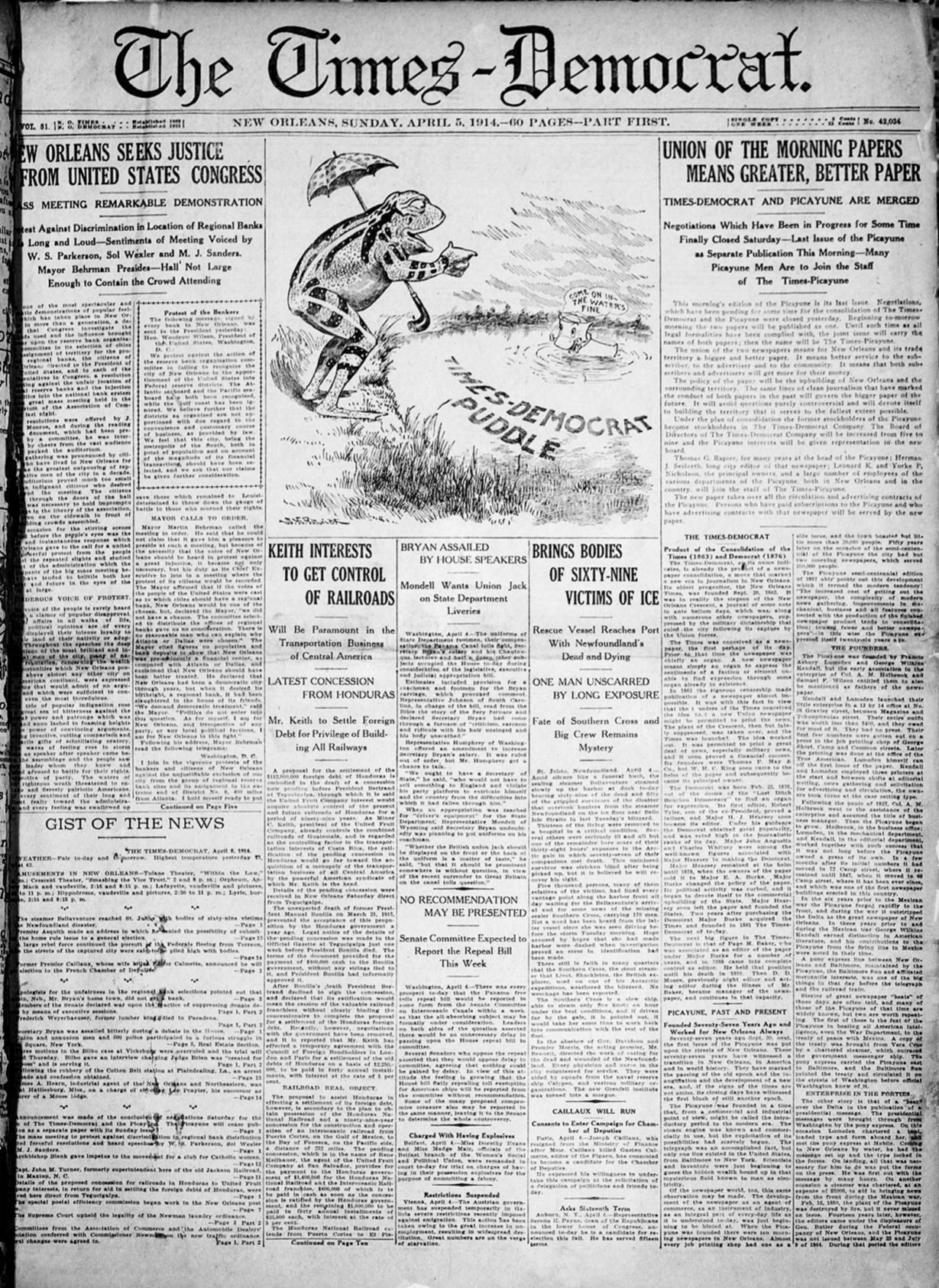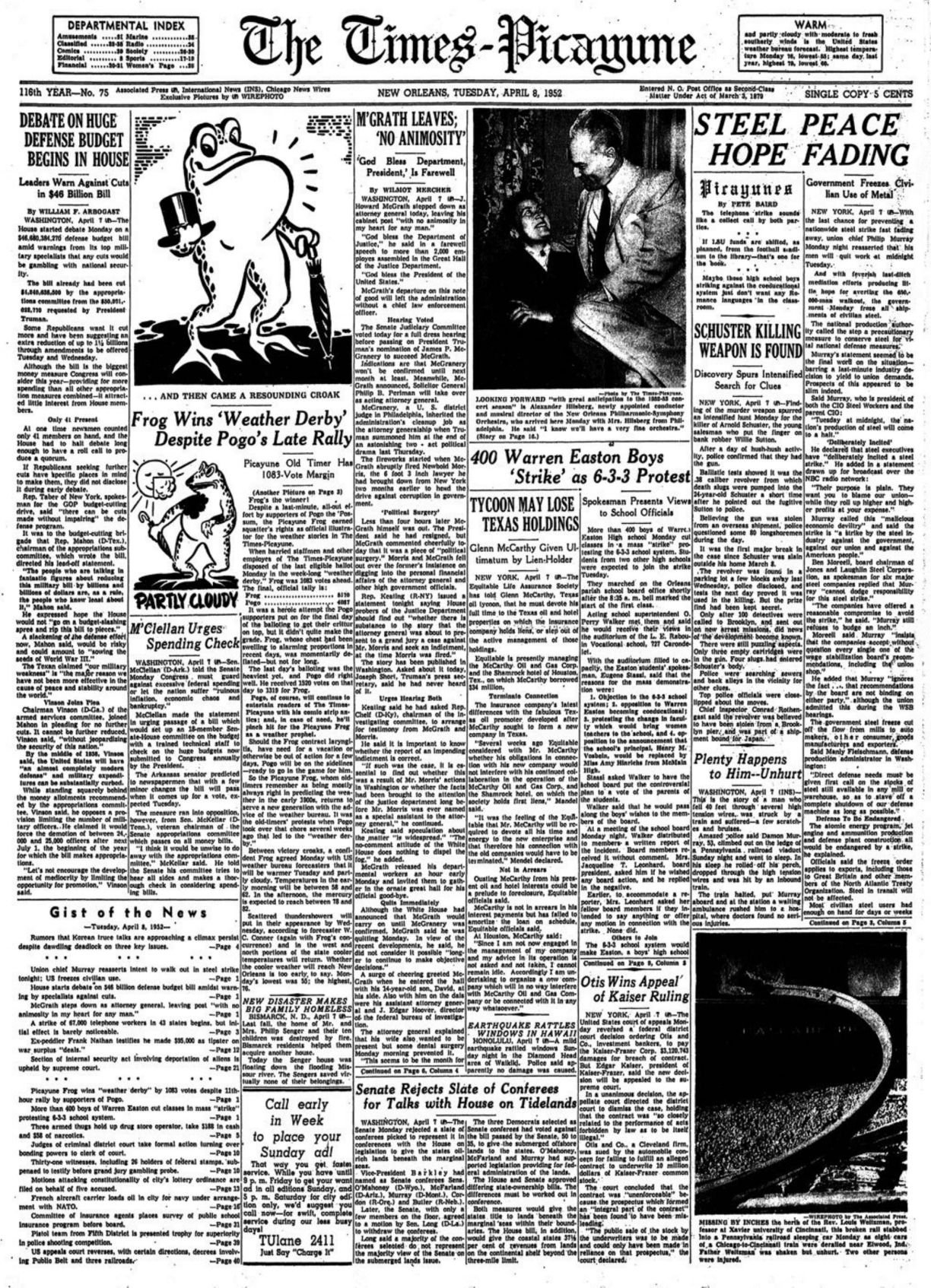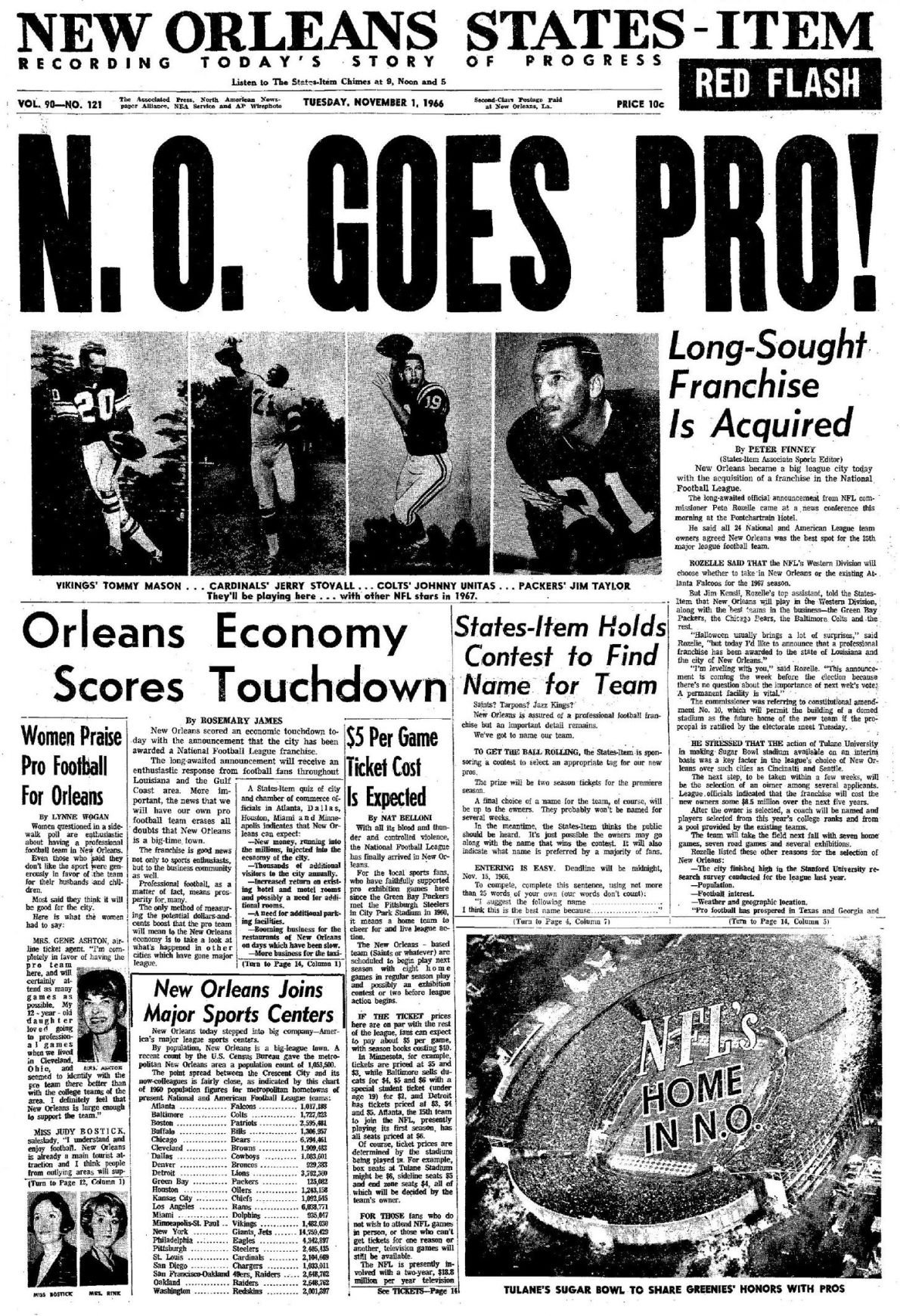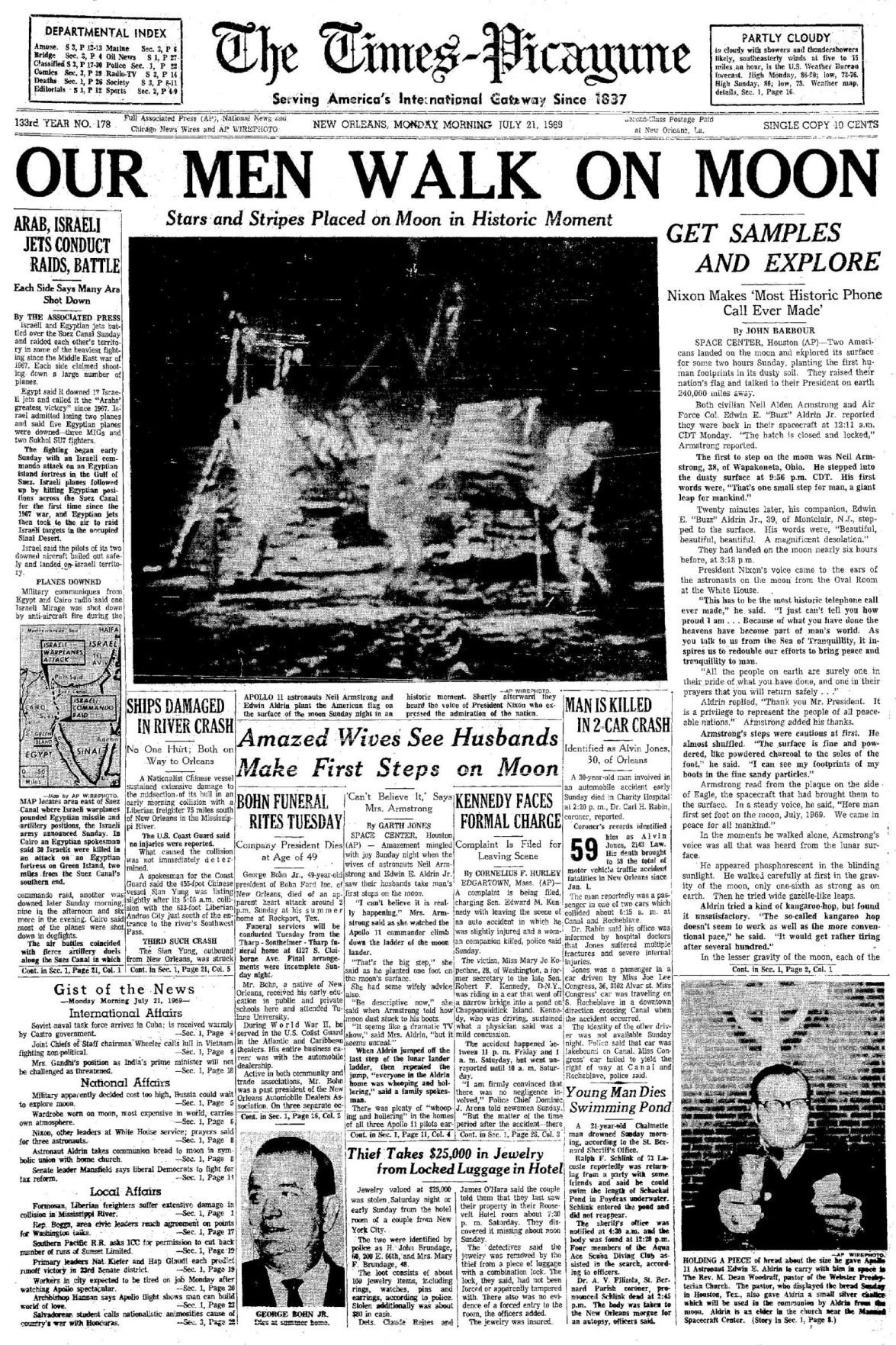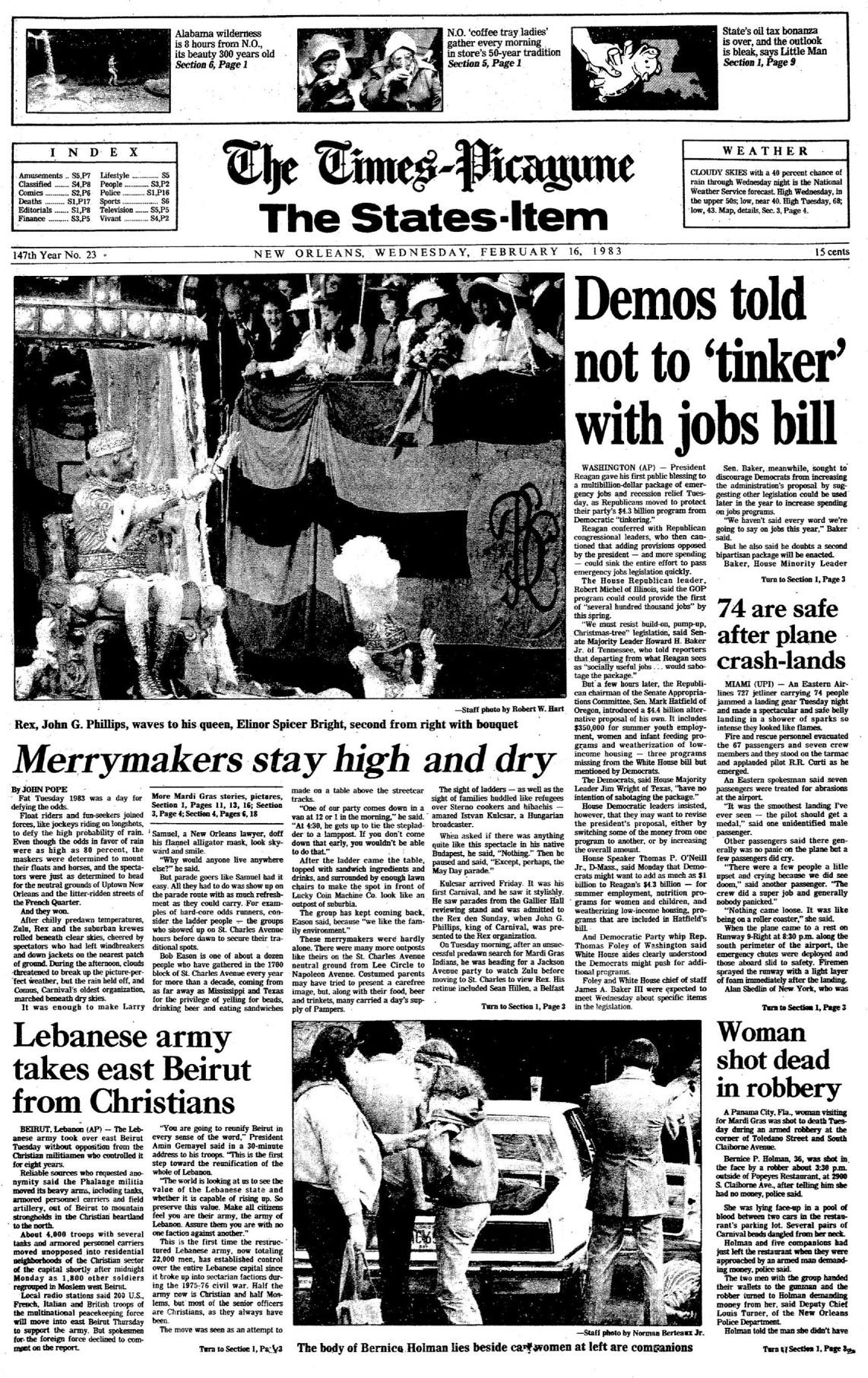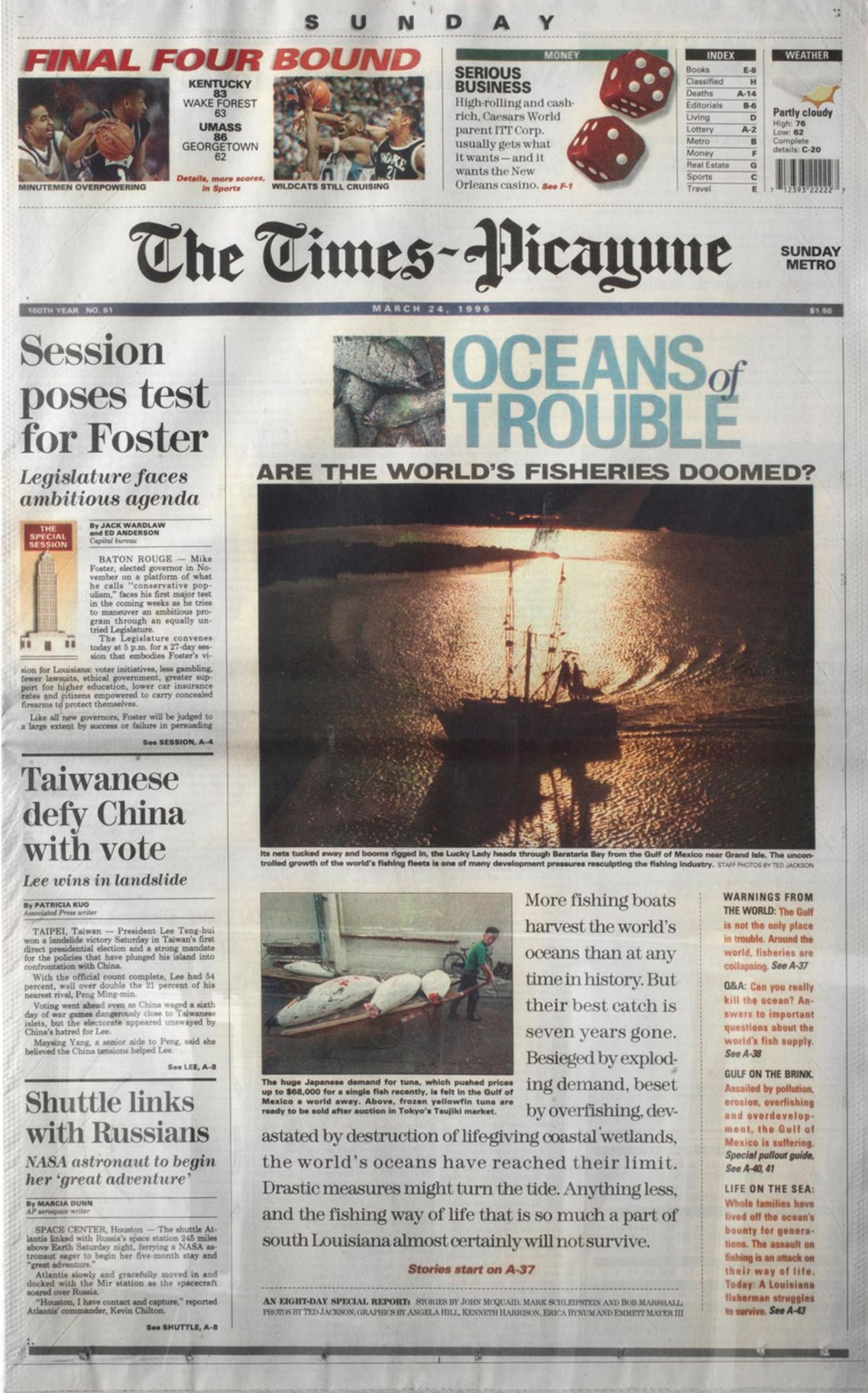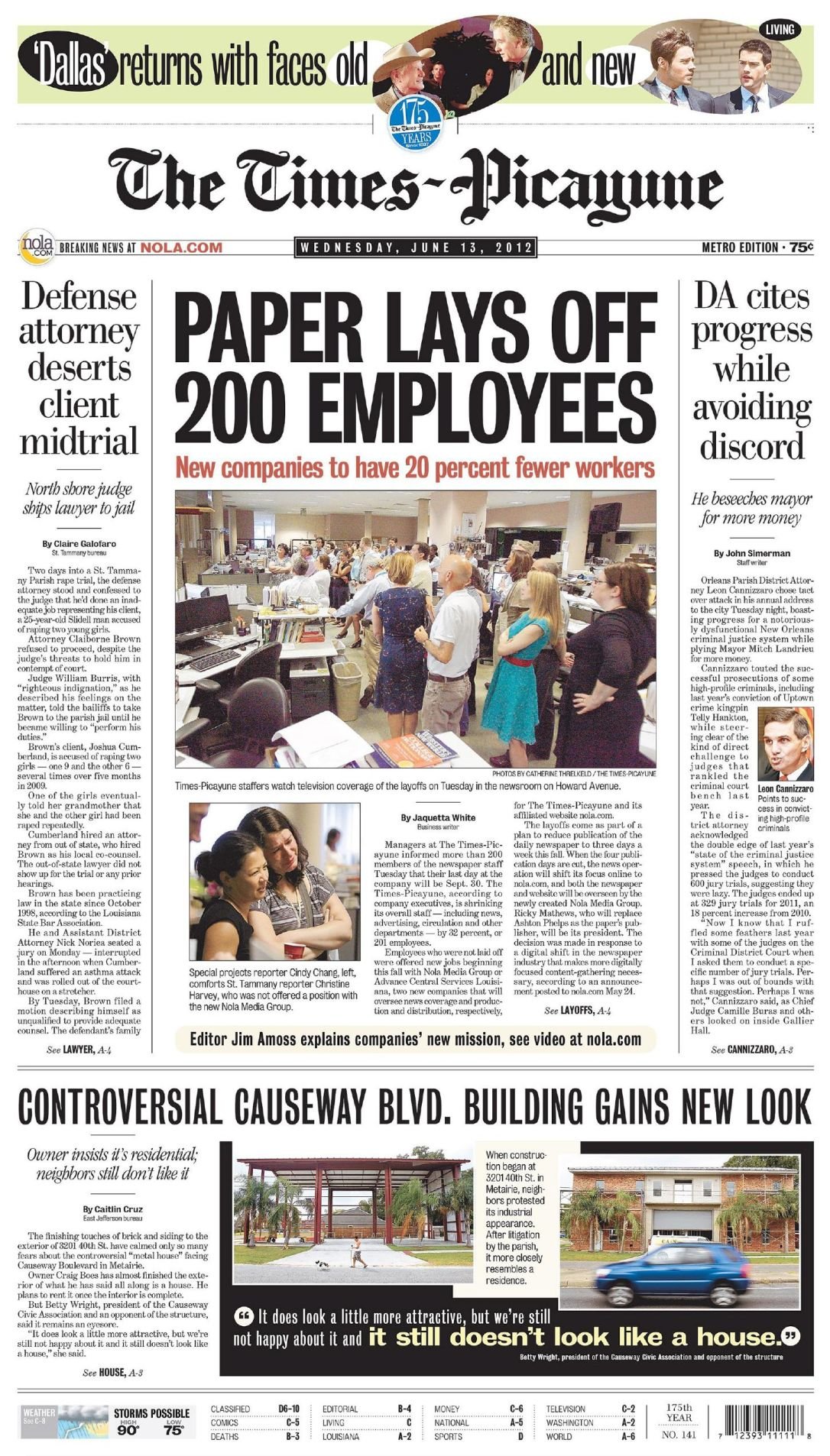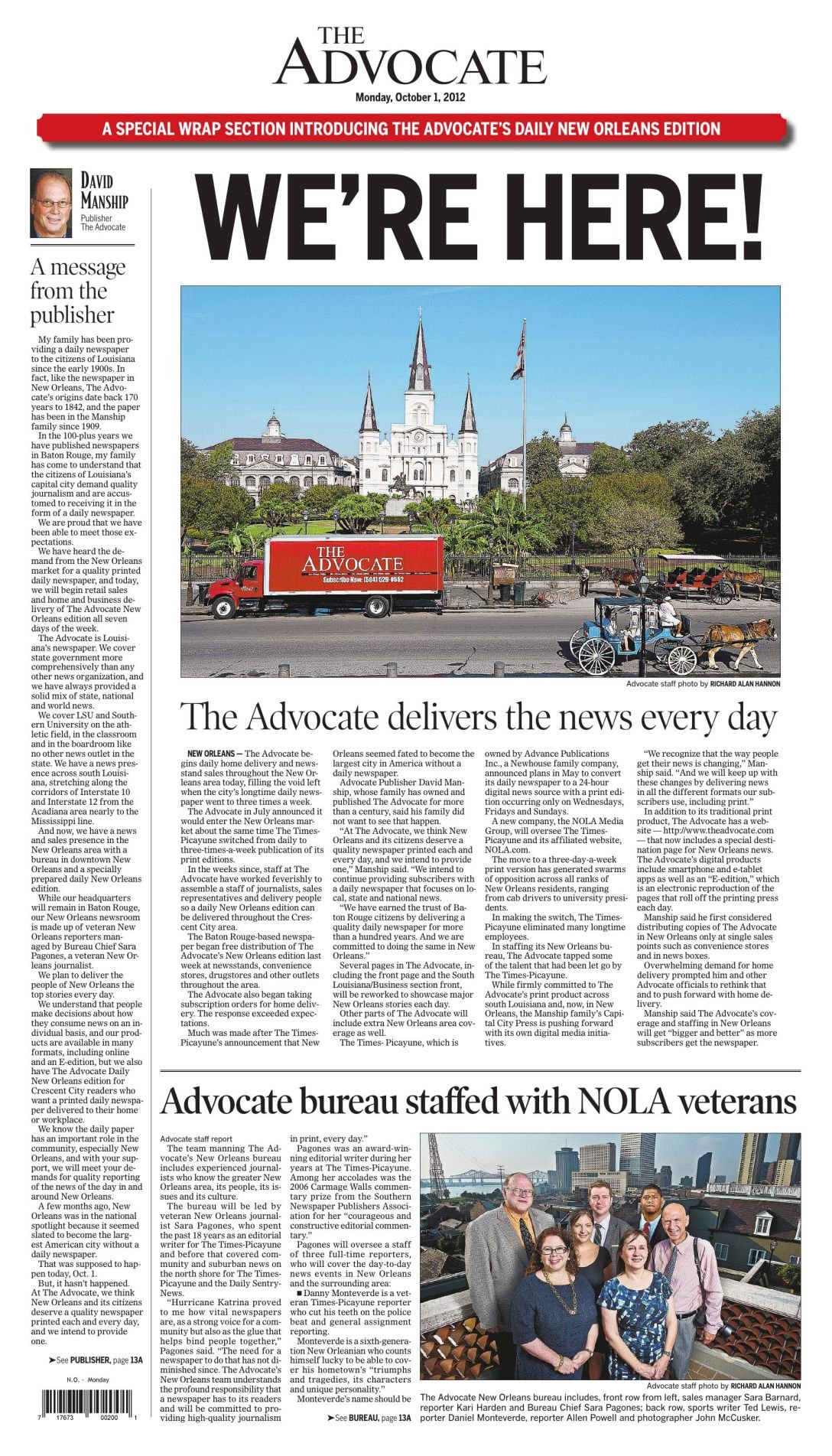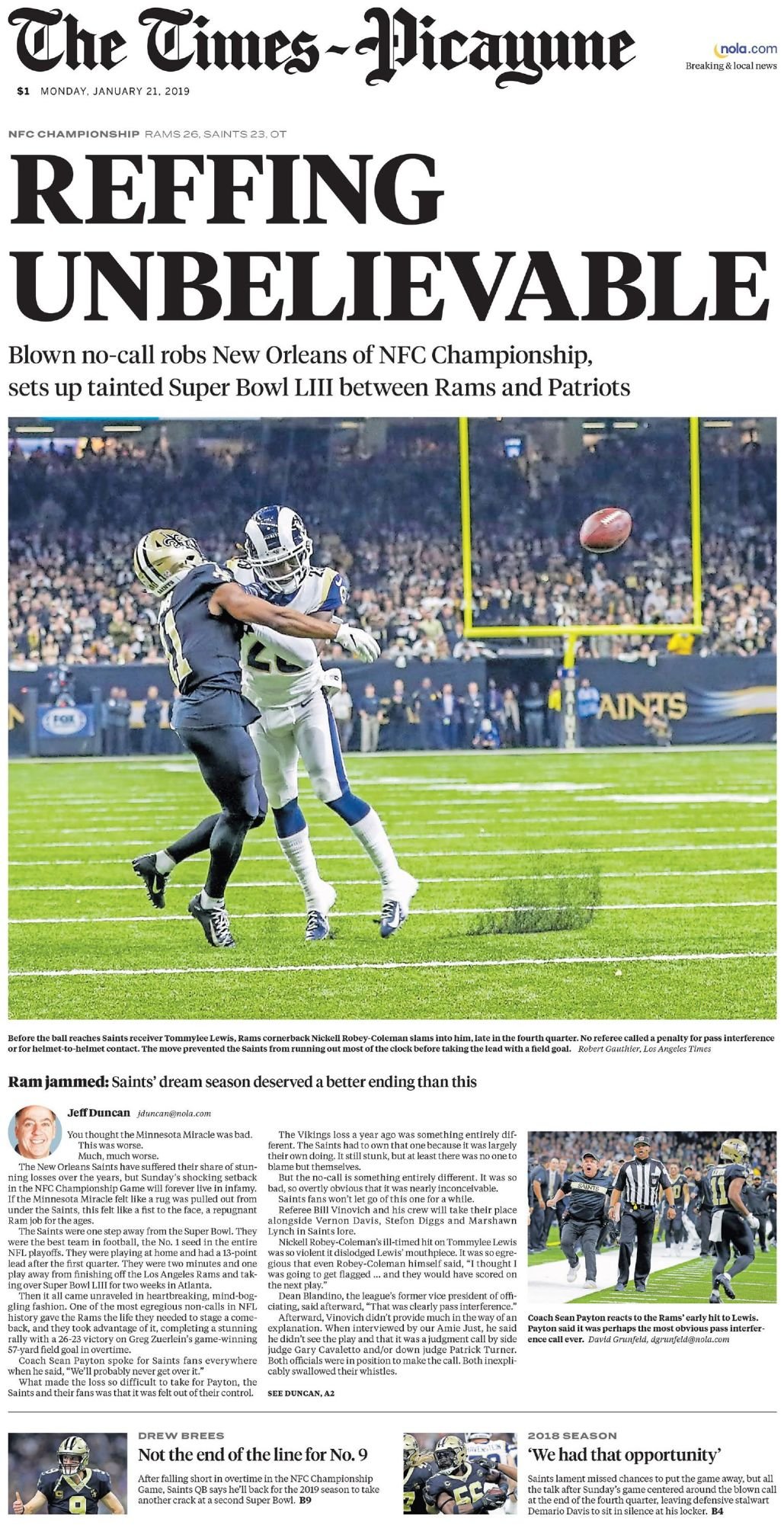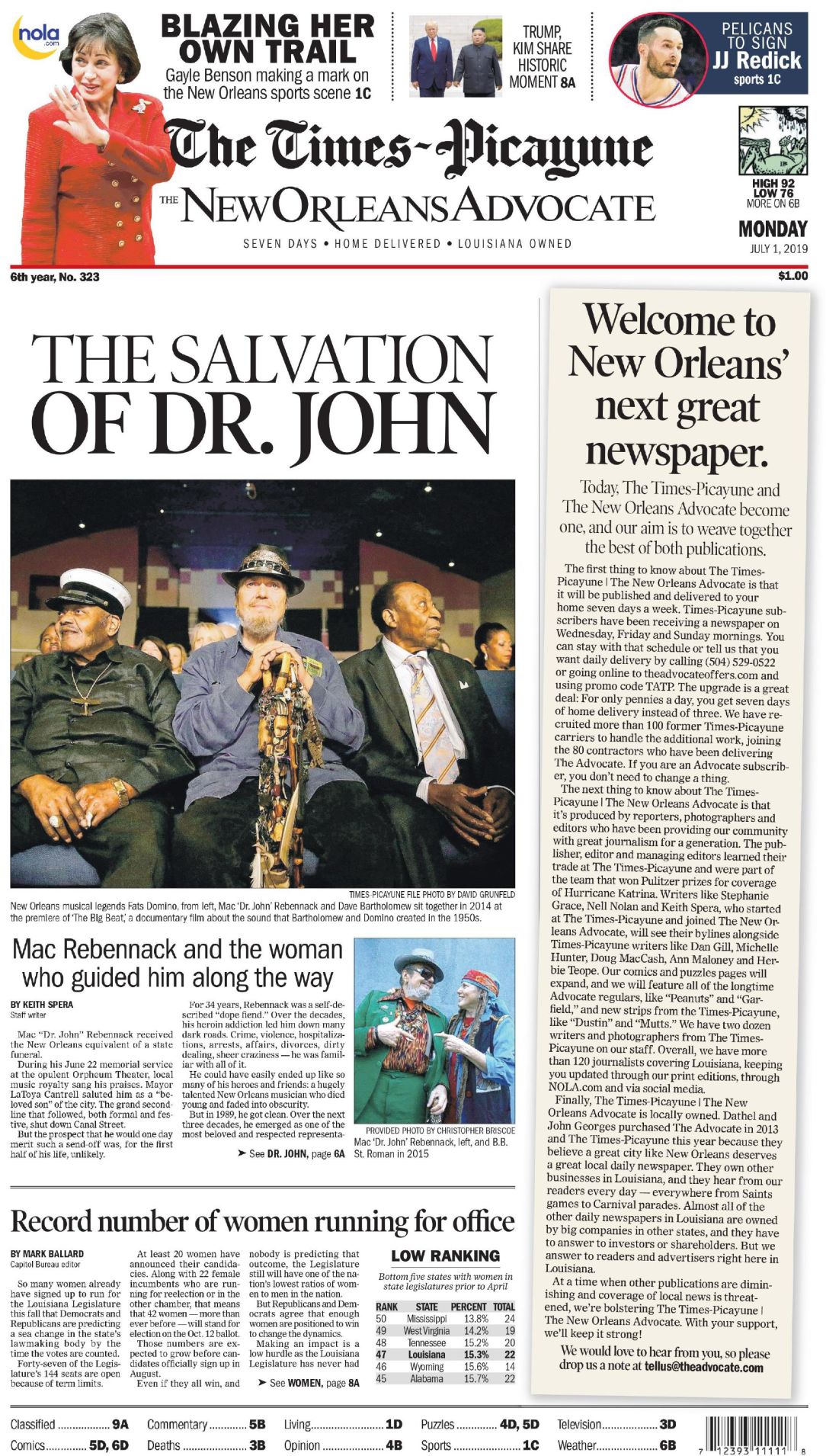Extra! Read all about it.
A look at New Orleans history through its newspapers' front pages. Not a definitive display of New Orleans' storied past, but rather a glimpse in time at name changes of the papers and landmark events.
Sunday, Jan. 29, 1837: The first-ever newspaper with the name "Picayune" in its title was printed in New Orleans. Shortly thereafter, the name was changed slightly to The Daily Picayune.
Sept. 13, 1900: The Daily Picayune's edition described the devastating hurricane that hit Galveston, Texas, killing between 6,000-12,000 people.
April 5, 1914: The Times-Democrat newspaper. In 1881, two papers, The New Orleans Democrat and The New Orleans Times merged forming The Times-Democrat. This front page was from right before The Times-Democrat was about to face another merger, this time with The Picayune.
Aug. 14, 1945: A banner headline was used to announce the end of World War II. Founded in 1877, the New Orleans Item published for more than 80 years until merging with The Daily States in 1958. Both newspapers were owned by The Times-Picayune when the 1958 merger took place.
April 9, 1952: The Times-Picayune began publishing in 1914, after The Times-Democrat purchased The Daily Picayune and combined the names following a brief period of dual branding. This front page displays a different typography on the paper's flag from what has been used in recent years, and the weather frog perseveres as a front page staple for many years to come.
Nov. 1, 1966: New Orleans States-Item uses a banner headline to announce that New Orleans has landed an NFL franchise team that would eventually be named the Saints. The States-Item was the result of a merger between The Daily States and The New Orleans Item.
July 21, 1969: The Times-Picayune's front page covered the historic moon landing. Lower on the page is an update on the fatal car accident implicating Sen. Edward Kennedy, which had occurred three days earlier and would dog Kennedy for the rest of his career. This page was one of many that was framed and on display in The Times-Picayune's cafeteria on Howard Avenue.
Dec. 22, 1977: The States-Item. At some point between 1958 and 1980, the paper changed its flag from an all caps serif typeface to a title case sans serif typeface. This front page reported on a fatal explosion at a grain elevator on the West Bank. 36 people died in the blast.
Feb. 16, 1983: The Times-Picayune and The States-Item. In 1980, The Times-Picayune, which already owned The States-Item, decided to fold its two newspapers into one, creating a dually branded product. The two names co-existed on the paper's flag until The States-Item name was dropped in 1986.
May 12, 1988: The first full color front page of The Times-Picayune debuted for coverage of the Cabildo fire in the French Quarter on May 11. It reopened to the public six years later in 1994, after restoration was complete.
March 24, 1996: The Times-Picayune begins publishing a special report analyzing the threatened global fish supply. The 8-day series titled "Oceans of Trouble" would go on to win the paper its first-ever Pulitzer Prize for public service in 1997. In the same year, staff cartoonist Walt Handelsman was also awarded the Pulitzer Prize for editorial cartooning.
Sept. 2, 2005: The now famous Times-Picayune front page captures the agony in the days following Hurricane Katrina's devastation in New Orleans. The newspaper's staff was scattered while covering the disaster, but continued to publish in print and on NOLA.com, and was awarded Pulitzer Prizes for public service and breaking news.
Feb. 8, 2010: Long lines of Saints fans wrapped around The Times-Picayune's former office on Howard Avenue to grab extra copies of this gem of a newspaper praising the New Orleans Saints first Super Bowl victory. Amen!
June 13, 2012: In the same year as The Times-Picayune celebrated 175 years of publication, the Newhouses’ Advance Publications announced it will reduce the paper's daily production to three days a week — Wednesday, Friday, and Sunday — and formed NOLA Media Group to oversee the paper and NOLA.com. Nearly 200 workers, including almost half the newsroom, lost their jobs.
Oct. 1, 2012: The Manship family, who owned The Advocate newspaper based in Baton Rouge, expanded operations into New Orleans to try to gain readers who wanted a daily paper. They hired employees who were laid off from The Times-Picayune to produce their new paper.
May 2013: John Georges and wife Dathel complete a deal to purchase The Advocate from the Manships and enhance their push into New Orleans with a rebranded, bigger New Orleans Advocate. This front page was the first rebranded newspaper from Aug. 18, 2013. The new owners also hired more former Times-Picayune employees, growing the New Orleans office.
Jan. 21, 2019: The Times-Picayune continues to gain praise for their design and headlines, like this front page that went viral on social media around the country after the New Orleans Saints were robbed on a blown call that most-likely denied them a second trip to the Super Bowl. The no-call play has since led to an NFL replay rule change.
July 1, 2019: The Times-Picayune and The New Orleans Advocate become one and launch a dually-branded newspaper. There are about 60 employees in New Orleans, most of whom have worked at The Times-Picayune during their careers. John Georges and wife Dathel purchased The Times-Picayune and NOLA.com in May, just one month after The Advocate won its first Pulitzer Prize for local reporting.
MORE COVERAGE:
It's a tale of two newspapers. The Times-Picayune and The Advocate. Both have been delivering the news for nearly two centuries. Here's a look…
For the past 182 years — years marked by wars, depressions, killer epidemics, monster hurricanes, flamboyant politicians, sports triumphs and …
Campanella: In Times-Picayune purchase, New Orleans' local newspaper scene returns to downtown roots
Observers here and nationwide have framed the recent purchase of NOLA.com | The Times-Picayune by The New Orleans Advocate in many ways, with …


